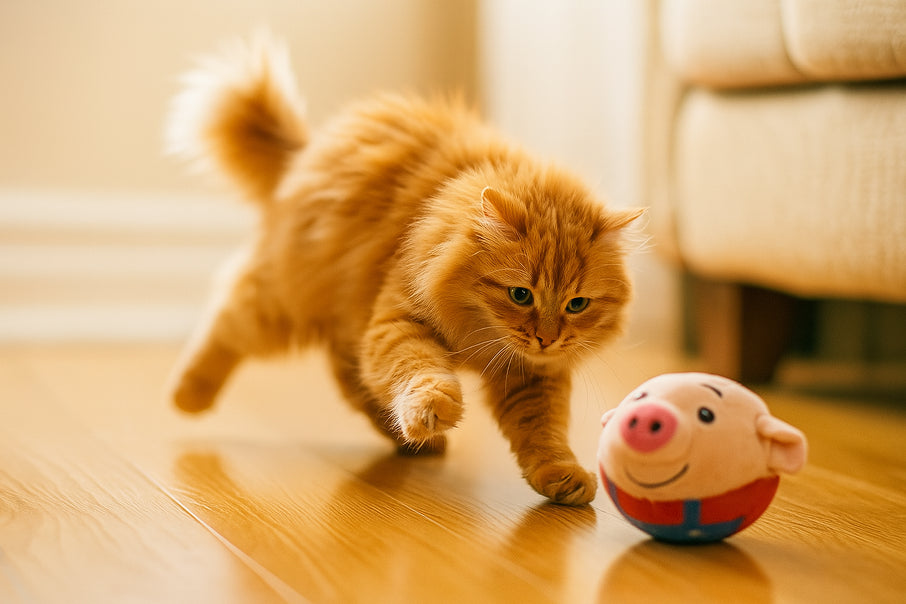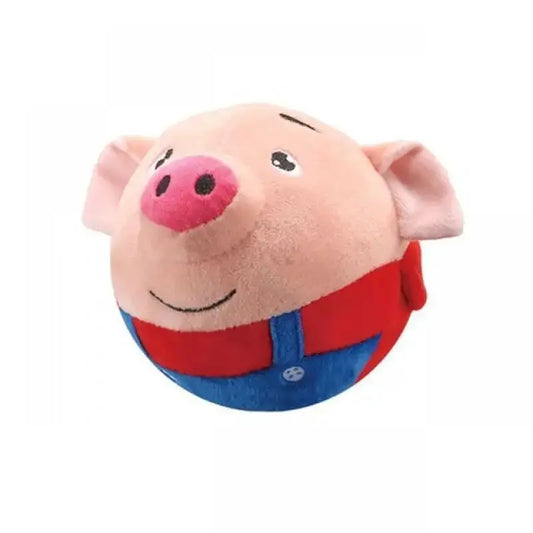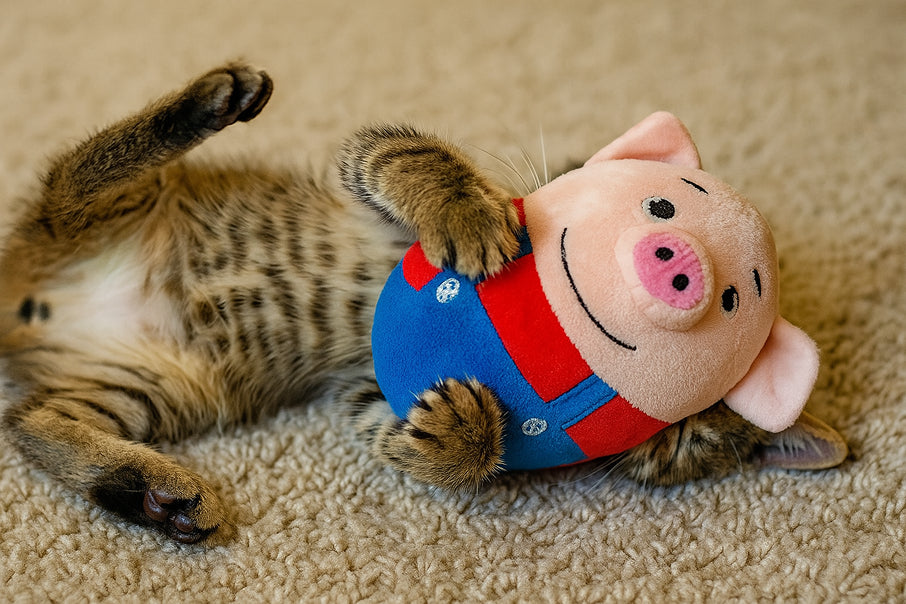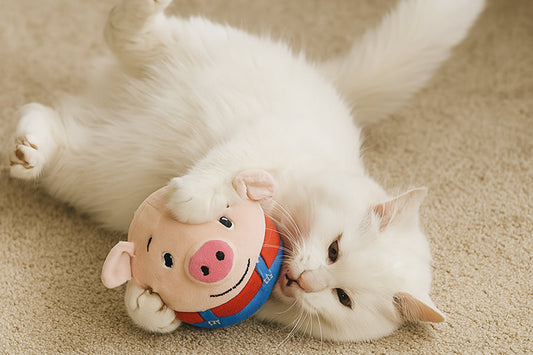Interactive Cat Toys Benefits and Simple Training Tips for Your Cat
Introduction
Cats may seem independent, but they thrive on stimulation, structure, and play. For pet parents, finding the right tools to keep your feline friend mentally and physically healthy can be a challenge—that’s where interactive cat toys truly shine. From improving mood and curbing destructive behaviors to supporting successful training sessions, these toys do more than just entertain. In this guide, we’ll explore the benefits of interactive cat toys and provide easy training tips to help you use them effectively.


Smart Electric Plush Dog and Cat Toy – Interactive Bouncing Fun for Indoor Play
How Interactive Cat Toys Improve Behavior and Mental Health
Interactive toys mimic the movements and unpredictability of prey, tapping into your cat’s natural instincts. These mental and physical challenges are key to preventing unwanted behaviors like scratching furniture, excessive meowing, or nighttime zoomies.
Key Behavioral Benefits:
-
Reduce boredom and frustration, especially for indoor cats
-
Prevent destructive behaviors caused by lack of stimulationHelp with weight management by encouraging active play
-
Relieve anxiety through routine and engaging interaction
Puzzle toys, treat dispensers, and feather wands all engage your cat’s mind and body. When used consistently, they promote better behavior and elevate your cat’s overall mood.
Easy Training Tips Using Interactive Cat Toys
Training a cat may seem daunting, but with the right approach, it’s easier than you think—especially when toys are involved. Interactive toys help redirect energy and reward positive behaviors, making them valuable tools for training.
Step-by-Step Training Tips:
-
Start with high-engagement toys like wand teasers or rolling balls to capture your cat’s attention.
-
Pair toy use with voice commands or clicker training. For example, reward your cat with a toy when they respond to a “come” or “sit” command.
-
Use toys to reinforce routines—playtime before meals, for instance, helps create structure and can even encourage picky eaters.
-
Keep sessions short and focused. Cats learn best in short bursts—aim for 5–10 minutes per session.
-
Be consistent. Repeating the same toy, command, or reward structure helps reinforce positive behavior over time.
Training through play also builds trust, strengthens your bond, and makes your cat more receptive to future learning.
Choosing the Right Toys for Your Cat’s Needs
Not all toys are created equal—and not all cats respond the same way. Choosing effective cat toys depends on your pet’s energy level, curiosity, and play style.
Types of Interactive Toys to Consider:
-
Feather Wands & Laser Pointers – Great for high-energy cats who love chasing
-
Puzzle Feeders – Ideal for brainy cats that enjoy problem-solving
-
Motion-Activated Toys – Encourage play while you’re away from home
-
Treat-Dispensing Balls – Perfect for food-motivated felines
Rotate toys regularly to keep them novel and exciting. Observe how your cat engages with different types to learn what motivates them most. If a toy is being ignored, try initiating play yourself to spark interest.


Smart Electric Plush Dog and Cat Toy – Interactive Bouncing Fun for Indoor Play
Conclusion
Understanding the benefits of interactive cat toys helps you provide a healthier, more enriching life for your feline companion. With the right selection and approach, you can turn everyday play into a training opportunity—building better habits, relieving stress, and strengthening your bond.
Ready to upgrade your cat’s playtime? Explore curated interactive toys for every personality at PetToyBarn.com.


